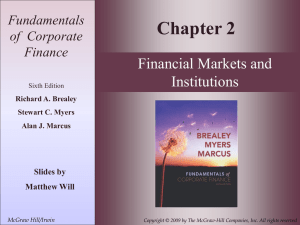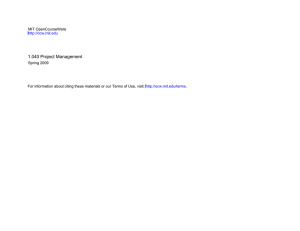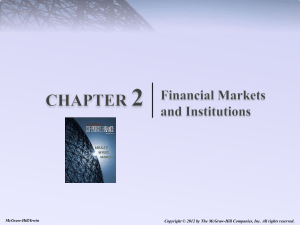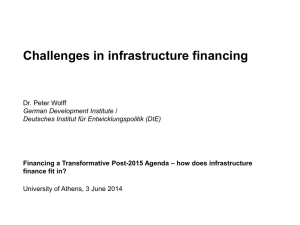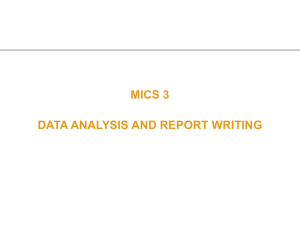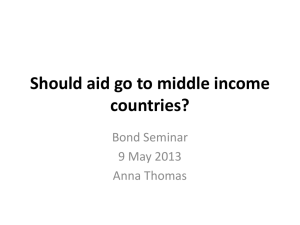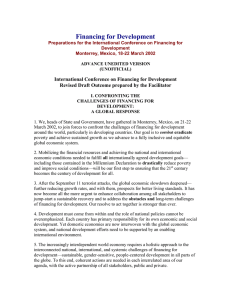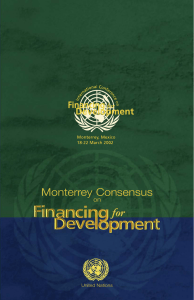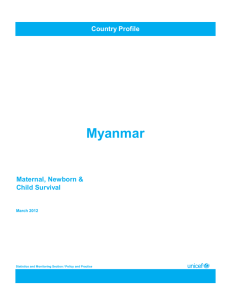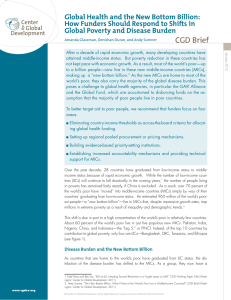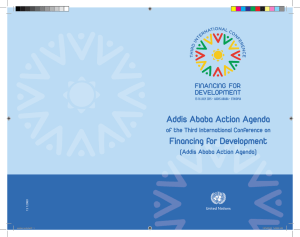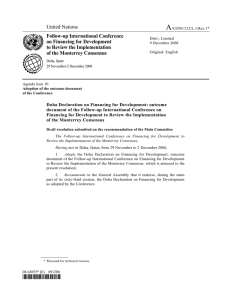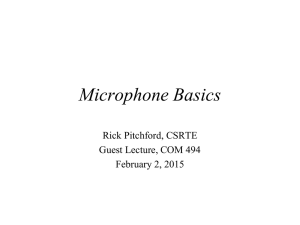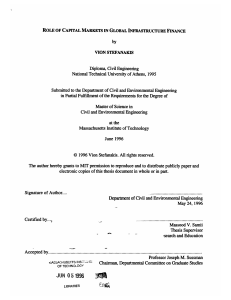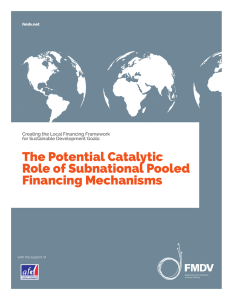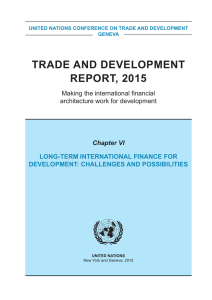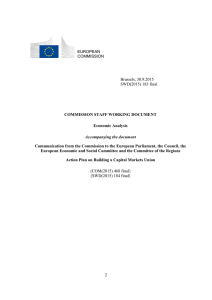Accra conference presentation - Peter Chowla
advertisement
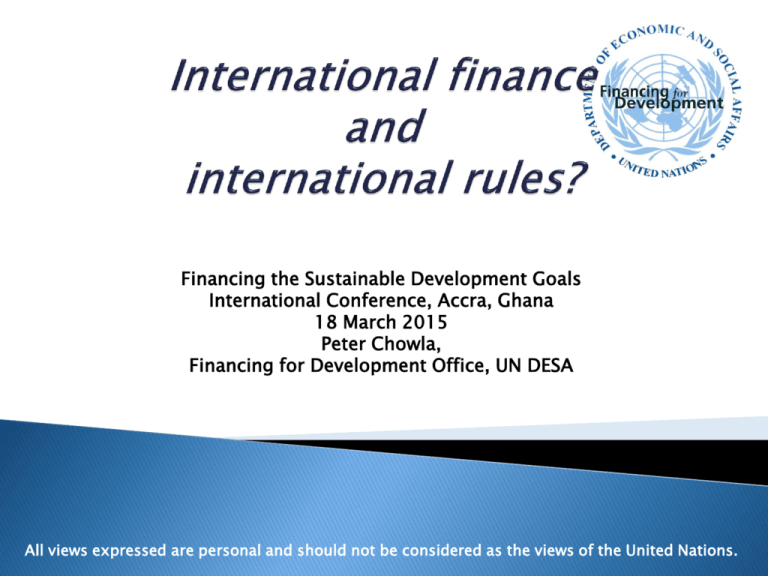
Financing the Sustainable Development Goals International Conference, Accra, Ghana 18 March 2015 Peter Chowla, Financing for Development Office, UN DESA All views expressed are personal and should not be considered as the views of the United Nations. Challenges International tax cooperation Needs and flows Caveats Water & sanitation ◦ Extra $100 billion annually in capital costs Education ◦ Extra $100 billion annually Health ◦ Extra $50-$80 billion annually Sustainable Energy ◦ Access: $50 billion annually ◦ Sustainability: $500 billion annually (all countries) To fill these gaps, public, private, domestic, and international financing needed Even if 0.7% were reached, ODA alone wouldn’t be sufficient. At the same time, the private sector which is profit-oriented is ◦ Particularly appropriate for productive investment ◦ But unlikely to invest sufficiently in social needs, global public goods where risk-adjusted returns are not high Different financing flows are complements, not substitutes, as they have different roles and objectives ($ billions) 2011 2012 2013 2014 African direct investment 41.8 35.0 40.0 41.0 African portfolio investment -11.7 3.5 8.9 -0.1 African other -9.3 net investment 22.3 -73.1 -17.6 Net Private Flows 60.8 -24.2 23.3 20.9 Revenue in an age of globalisation Domestic revenue is the largest and most reliable source for investment in sustainable development International rules, policies and cooperation often limit what Governments can raise as domestic revenues There is no agreed definition of IFFs: commercial tax evasion, criminal activity, corruption – domestic and international Estimates of untaxed off-shore wealth: $6 trillion - $32 trillion At the domestic level: tax administration ◦ Skills and capacity gaps ◦ Regulatory capture At the international level ◦ Method of allocating economic activity Transfer mispricing – particularly intangibles ◦ Tax competition between jurisdictions ◦ Fiscal transparency rules Distributional implications ◦ Domestic & international businesses ◦ State & business ◦ Amongst states Political economy of intergovernmental negotiations ◦ Most MNEs are hosted in OECD countries ◦ Incentives for policy makers are skewed Participation of developing countries in reforms Assistance for tax capacity building ◦ Optics – substitution for ODA and other finance Venue for tax policy making ◦ Roles of the UN Committee of Experts on Tax Matters, OECD, Global Forum Definitions and data Fiscal transparency implementation ◦ Multilateral convention? ◦ Delayed reciprocity? Alternatives to whole transfer pricing reforms ◦ Unitary taxation ◦ Innovative policies – standardised transfer pricing ◦ Cooperative auditing UN Convention Against Corruption Stolen asset recovery Combatting environmental crimes Overall it speaks to coherence questions: ◦ Global economic governance structures ◦ Follow-up process Original sin, contagion Total debt securities rose from 13% of GDP in 1994 to 54% of GDP in 2010 in upper middle income countries (Laeven 2014) Local public debt changes ◦ Upper MICs: 8.1% -> 31.3% ◦ Lower MICs: 35.0% -> 29.2% Local private debt changes ◦ Upper MICs: 2.4% -> 13.3% ◦ Lower MICs: 0.9% -> 1.6% The share of local currency denominated bonds in US investor portfolios has grown from about 2 per cent in 2001 to about 37 per cent in 2011 Exchange rate risks Portfolio flow volatility Availability of capital to SMEs and domestic business Market size problems Debt versus equity driven markets Macro-prudential regulatory framework – matching this to national needs and situations Capital account management tools Striking the right balance between stability and capital availability Environmental, social & governance risks ◦ Corruption may not be the biggest problem given global systemic risks Support for local capital markets or access to international capital Appropriateness of Basel III regulations Restrictions on capital account management contained in investment and trade treaties Harmonisation of ESG frameworks Regional integration policies A FLOW OF FUNDS FRAMEWORK Domestic Enabling Environment and Policy Framework Intermediaries Sources* National public sources National private sources International public sources** International private sources Public institutions, e.g. • Governments • National and regional development banks • Bi- and multilateral aid agencies • International financial institutions Goals and Uses Instruments, e.g. Domestic public spending Grants Subsidies Loans National (e.g. poverty/social needs and investments in national development) Concessional Non-Concessional Blended institutions, e.g. • Innovative partnerships, e.g. Global Health Funds, potential public-private infrastructure funds PPPs Environmental Economic Guarantees Private investors Investors with long-term liabilities, e.g.: Investors with shortand medium term liabilities, e.g.: • Pension funds • Life insurance • SWF • • • • Banks Cooperative banks Mutual funds Hedge funds Bank loans Money markets Bonds Social Equities Derivatives and direct investors International Enabling Environment (including fair-trading system, macroeconomic stability, systemic issues, etc.) International (e.g. global public goods)


